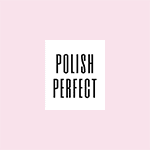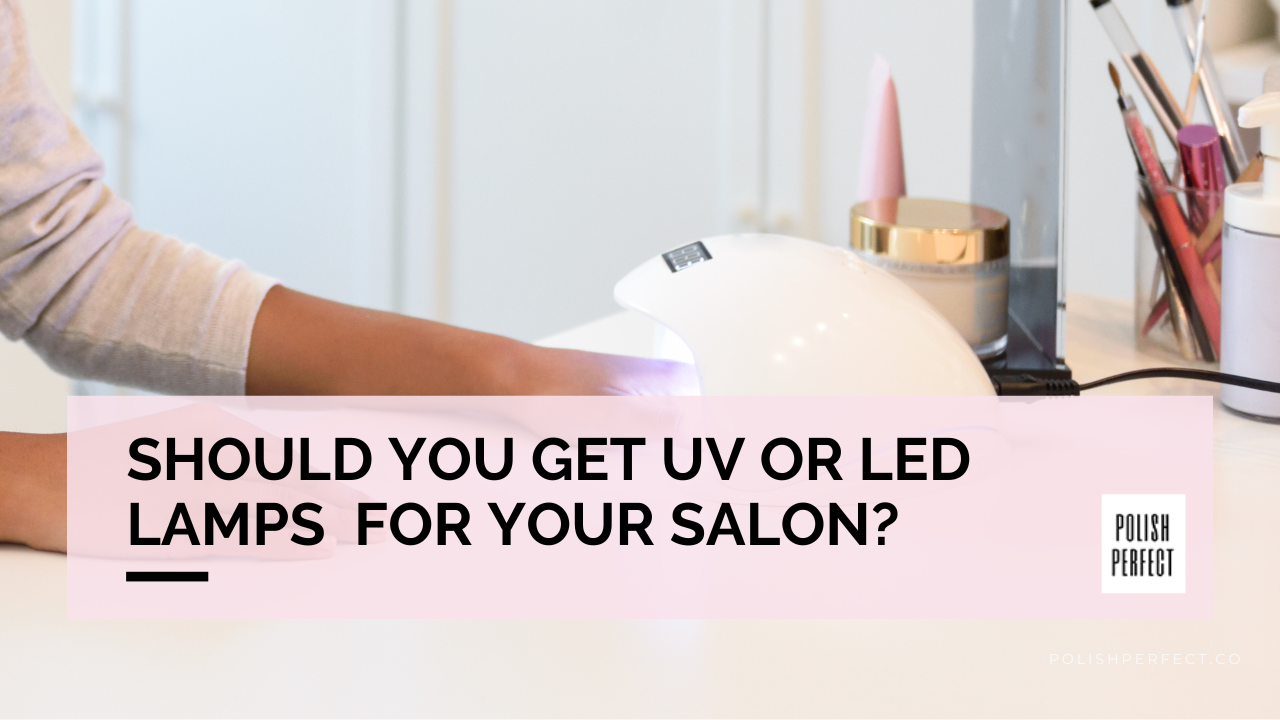Nail technicians are often faced with the challenge of choosing between UV or LED lamps (Ultraviolet Radiation or Light Emitting Diode nail lamps) for their salon.
Both types of lamps are used to cure gel polishes, but there are differences in their safety, efficiency, and cost.
This can make it difficult for nail technicians to decide which type of lamp is the best choice for their salon.
In this article, we will explore the differences between UV and LED nail lamps and provide information to help nail techs make informed decisions.
What are UV and LED Nail Lamps?
UV and LED nail lamps are specialized devices used in nail salons to cure gel nail polish.
They emit a specific wavelength of light that triggers a chemical reaction in the gel polish, causing it to harden and cure.
UV lamps use ultraviolet light, while LED nail lamps use light-emitting diodes.
What is the Difference Between UV and LED Lamps?
Let’s start with the basics. LED stands for Light Emitting Diode, while UV stands for Ultraviolet.
The main difference between these two types of lamps lies in the wavelength of light they emit.
UV Lamp: The Classic Choice
UV lamps have been a staple in the nail industry for years. UV lamps produce a broader spectrum of light that includes both UVA and UVB rays.
When curing gel nails, UV lamps can take up to 2 minutes or more to fully cure gel polish, LED lamps can do the job in just 30-60 seconds.
While LED is popular in most salons, many nail salons still have UV lamps in their arsenal, especially if they offer a wide range of gel polish options that require UV curing.
LED Nail Lamp: The Modern Alternative
LED lamps have gained popularity in recent years due to their faster curing time and lower energy consumption. It emits a narrower spectrum of light, primarily in the UVA range.
LED nail lamps offer faster curing times, longer lifespans, and increased safety, making them the preferred choice for most nail technicians.
However, LED lamps can only dry LED-specific gel nail polish and are more expensive than UV lamps.
UV or LED Nail Lamp on Gel Manicure: Why It’s Needed
If you want a gel manicure, you have no choice but to settle for a nail lamp.
Gel nail polish won’t dry unless it’s directly exposed to a certain wavelength of UV or LED light. This is due to the molecules created by gel polish manufacturers.
Photo-initiators, on the other hand, require light exposure to be activated to complete the drying process, evidently leading to dry and shiny nail polish.
If you have no intention of curing the gel under a UV or LED nail lamp, the whole process will be pointless since the paint will quickly chip off.
This defeats the purpose of having chip-free nails for the next few weeks as intended.
Compatibility of UV and LED Nail Lamps with Different Nail Polish
While both UV and LED nail lamps can cure gel nail polish, it’s important to note that not all gel polishes are created equal.
Some gel polishes are specifically formulated to cure with UV light, while others are designed to cure with LED lamps.
Make sure to check the label on your gel polish bottle to ensure it’s compatible with the type of lamp you have.
Note that you can pair an LED polish with a UV lamp. But you should never use UV nail polish with an LED lamp.
UV light is active within a broad band of UV wavelength (around 100 and 40nm). Meanwhile LED functions on a narrower wavelength (400 to 410nm).
Since UV lamps are capable of emitting UV wavelengths, it takes a lot longer to dry polish. Such lamp type works effectively on all gel polish.
LED technology makes use of narrow UV wavelengths aimed at certain photoinitiators seen in gel nail polish. This makes it faster for the gel to dry.
Is LED or UV Safe?
Now, let’s address the elephant in the room: the safety concerns surrounding UV and LED nail lamps.
The topic of UV light and its potential link to cancer has been a subject of concern in the nail industry.
But is there any truth to these claims? The short answer is no.
According to the Skin Cancer Foundation, the amount of UV exposure you receive during a gel manicure is minimal and unlikely to cause harm.
Furthermore, a comprehensive review in 2020 by Schwart, Ezaldein, and Merati, concluded that there is little to no carcinogenic risk with the use of UV gel manicures [1].
While UV lamps do emit UV rays, the risk of developing cancer from using these lamps during gel manicures is relatively low. Recent studies conclude that these lamps pose no significant health risk for the population [2].
To be on the safe side, you can take a few precautions. Applying sunscreen to your hands before undergoing a gel manicure can provide an extra layer of protection.
Additionally, wearing UV-protective gloves during the curing process can further minimize any potential risks.
Bottom line: UV and LED nail lamps are safe to use when used as directed.
In A Nutshell
- Most gel polish brands are specifically made for LED lamps. That means they’re well under the UV band.
- A majority of gel polishes can be dried under the exposure of a UV lamp. On the other hand, LED lamps can only dry LED-specific gel nail polish.
- LED lamps are quicker in drying nail polish. It takes as little as 30 seconds compared to the two minutes that a UV lamp can provide.
- LED lamps are costly compared to UV lamps.
- LED lamps are longer lasting than that of traditional UV lamps.
Buying A UV or LED Nail Lamp
As indicated, you make use of LED-specific nail polish under a UV lamp. But you can’t use UV-specific polish under an LED lamp.
So your choice of lamp will only be dictated by the kind of nail polish you’ll be using during the gel ma nicure.
LED lamps are pricier than UV lamps, but their advantages far outweigh that of a UV-based model.
LED lamps can quickly cure your nails within mere seconds compared to several minutes under a UV lamp.
LED lamps are far more efficient since they use less electrical power and can last for years.
Furthermore, they’re capable of protecting your hands from overheating since they emit “cool” heat and aren’t as red-hot as UV lamps.
In addition, LED lamps minimize the risks associated with UV-light exposure. UV rays from LED lamps contain zero toxic chemicals, which makes them friendly to the environment.
A majority of nail salons nowadays are using LED lamps. At the same time, the latest gel nail polish products cater to LED lights.
If warnings of skin aging and skin cancer continue to make big headlines, there’s a strong chance manufacturers will put a stop to UV lamp production since a safer alternative (LED) has already made it to the masses.
At this point, both lamps are considered safe to nail treatment.
Finding the Right Balance
Ultimately, the choice between UV and LED lamps depends on your salon’s needs and preferences.
LED lamps offer faster curing times and energy efficiency, while UV lamps are more affordable and versatile.
Whichever option you choose, it’s crucial to prioritize safety by following proper precautions and using sunscreen during UV light treatment.
Did you find this article helpful? We always love to hear your thoughts in the comment section.
More Related Resources:



